2022 Specialized Stumpjumper EVO Elite Alloy Bike
(discontinued)
| Where To Buy | |||
|---|---|---|---|
Free shipping on orders over $50 (continental U.S. only).
International shipping available. Some exclusions apply. |
|||
Free shipping on orders over $50 (continental U.S. only).
International shipping available. Some exclusions apply. |
|||
Free U.S. shipping on orders over $50, except bikes.
There is a $50 destination fee for bikes. |
|||

Specialized's new Stumpjumper EVO Alloy is an exciting mountain bike. The combination of a well-put-together parts spec, with all of the adjustability and capability of the carbon model, at a more competitive price point, is something riders have been asking for. The new alloy version of the Stumpjumper EVO Elite offers arguably the most bang for your buck out of the lineup. With the focus being primarily on performance rather than weight savings, this bike may be the way to go. While previous generations of alloy bikes meant sacrificing some features found only on carbon frames, Specialized has upped the game with their latest alloy offering by leaving out none of the carbon exclusive features.
Strengths
|
Weaknesses
|
Highlights
- Aluminum frame
- 29-inch wheels
- 150mm (5.9-inches) of rear-wheel travel // 160mm (6.3-inches) fork travel
- FSR suspension design
- Tapered headtube
- Internal cable routing
- SWAT box
- Angle adjust headset
- FOX Factory Suspension
- Threaded bottom bracket with ISCG 05 mounts
- Boost 148mm rear spacing with 12mm through axle
- Measured weight (size S6, no pedals): 35.4pounds (16.05kg)
- MSRP $5600 USD



Being the first aluminum frame from Specialized to feature a SWAT box is pretty cool, but it is even cooler to see the angle-adjustable headset carry over from the carbon frame. In addition to the built-in adjustability of the frame, Specialized also offers an aftermarket link for mullet compatibility making for a highly versatile package with some impressive performance on trail. The revised cable routing of the aluminum frame makes for a simplified routing process compared to previous generations and a silent ride out on the trail. The same updated FSR suspension platform featured on the carbon frame is carried over to the alloy frame as well as a threaded bottom bracket, Boost hub spacing, and standard shock sizing.

Specialized is offering the Stumpjumper EVO in two complete alloy builds as well as a frame-only option. Frames with a FOX Float X Performance shock are available for $1,900 in the two-tone scheme found on our test bike, as well as an LTD model in Satin Blue Onyx. Complete builds include the Comp at $3,800 and our test, Elite build at $5,600.

Riders will get into the Stumpjumper EVO family for $3,800 and will be equipped with a FOX 36 Float Rhythm for and Float X Performance rear shock. The drivetrain is full SRAM NX Eagle drivetrain, complete with size-specific crank lengths. SRAM Code R brakes with 200mm rotors will make the EVO Comp stop real quick. An X-Fusion Manic dropper post and Specialized alloy wheels finish off the larger points of the build.



Jumping up to our Elite build has the suspension moving to the top of the food chain with FOX Factory squishy bits - Factory 36 fork and Float X Factory rear shock. The drivetrain bumps to SRAM GX Eagle. Brakes gain the addition of a swing link in the Code RS models, maintaining 200mm rotors front and back. The dropper post upgrades to the OneUp and wheels become Roval Traverse alloys with DT Swiss 370 hubs.
Geometry
With its forward-thinking approach, the Stumpjumper EVO has been leading the charge in progressive geometry trends. The highly adjustable geometry of the Stumpjumper EVO gives you the flexibility to find a setup that best fits your terrain and riding style within the same frame without losing the focus of downhill performance nor pedaling efficiency. With a keyed inner profile headtube, the upper headset cup can be swapped out for the offset cup and flipped between +1-degree and -1-degree settings in a matter of minutes to change the handling characteristics of the bike. Combined with a bottom bracket height flip-chip offering 7mm of height adjustment, a total of 6 different geometry settings are possible with an overall 2.5-degrees of headtube angle adjustment.



Setup
Our test bike came shipped to us in the high bottom bracket setting and the headset in the middle cup position, giving the bike a 340mm bottom bracket height and 64.5-degree head tube angle. After a ride or two, we decided to try the +1 angle headset cup to achieve a steeper 65.5-degree headtube angle and 343mm bottom bracket height in an attempt to tighten up the steering a bit for the lower trail speeds around Phoenix and help minimize pedal strikes. We were happy with the change it made and only switched back to the middle cup once before ultimately ending up back at the steeper +1 setting. We set our FOX 36 fork pressure to our preferred 115psi, the Fox Float X rear shock to 27% sag with plenty of rebound damping available even for our 215lb test rider.



Our initial impression sitting on the bike was that it was big. With a 528mm reach, 679mm horizontal top tube length, and a 1322mm wheelbase on our size S6 test bike, our 6’4” test rider felt the bike was roomy and slightly stretched out initially. After a slight saddle adjustment, we felt comfortable for the remainder of the test period and did not make any changes aside from bar roll when changing between headtube angles.

On The Trail
Trails Ridden
We rode the Stumpjumper on a variety of terrain starting with South Mountain in Phoenix, AZ where we experienced the bike's technical capability both uphill and downhill. Joaquin Miller Park in Oakland, CA for some high-speed laps and longer sustained climbing. The Whole Enchilada in Moab, UT to see how the bike felt over the course of a longer day. Finally, Mt. Eldon in Flagstaff, AZ for some steeper descents. We felt the trails in Oakland and Flagstaff suited the bike very well with sections in Moab and Phoenix also feeling quite comfortable when things got steep and higher speed.

DH/Technical Performance/Fun Factor
Pointed downhill, the fun factor increases as the trail speed and terrain get gnarly. We noticed this bike comes alive when slotted into turns at speed and were impressed with the level of momentum it carried through rolling sections. While the bike can be ridden rather causally, we were quite impressed by how confident we felt leaning into turns we might otherwise think to be a little more careful in. The wheelbase of this bike paired with good body position both contributed to this feeling and was beneficial when changing direction. Our confidence grew, knowing there was so much traction and stability on hand. Our lone exception being very tight switchbacks where it was necessary to do some additional planning ahead. The bike felt planted through chatter and remained composed in just about every situation we put it through which really made us want to continue pushing it.

Rear Suspension Performance
The rear suspension offers great small bump compliance and we were surprised by how well it performed over square edges more than anything. Having ridden the previous generation Stumpjumper, we were very impressed by the improvements made in kinematics alone. With the theme of this bike being composed at speed, we felt the rear suspension was still equally as useful for lower speed trails with lots of body movement and had no issues with getting the bike off the ground. Pairing these new kinematics with the new FOX Float X shock provided a balanced ride that tracked great and offered a great pedaling platform.



Unique Features
The most unique feature of the new alloy frame has to be the integration of the SWAT box only found on carbon frames prior to this one. It is without a doubt one of the most convenient ways to pack additional supplies for a big ride or to just ensure you can fix a flat trail side without having to think about it. The angle-adjustable headset is also a really nice feature to have for dialing in the handling characteristics of the bike to avoid being pigeonholed into an overly aggressive or under-gunned ride quality. We feel these features provide a substantial gain in performance and convenience for riders.

Geometry
There is no mistake that the geometry of the Stumpjumper EVO is very downhill focused. It performed best in the areas we expected as well as other areas we expected less. Performance at high speeds was spectacular and inspired confidence when rolling into more aggressive sections of trail and leaning early into turns we may otherwise think to back off. Oddly enough, we felt the most comfortable under these circumstances while in the steepest and highest geometry settings. The seated pedaling position felt efficient and roomy without being overly stretched out thanks to the large front center measurement and less extreme horizontal top tube measurement, making the larger bike feel much more maneuverable and nimble than expected while climbing. The only flaw we could find related to geometry was the frequency of pedal strikes while climbing with such a low bottom bracket.

Perceived Weight
The bike doesn’t feel heavy but it does have a stuck-to-the-ground feeling. The Stumpy EVO rolls very fast, changes direction with ease, and is still relatively easy to get off the ground but favored scrubbing more than popping. Any sluggish feeling is more likely related to its size rather than its weight, we imagine an S5 would have a more lively feeling to it.

Sprinting
Getting up to speed on the Stumpjumper EVO didn’t require much additional effort over other bikes in the category. The bike maintains the glued-to-the-ground feeling when putting the power down with minimal pedal bob. We really enjoyed this when looking for a little extra speed on trail.

Climbing
The efficiency of this bike was something we noticed straight away while pedaling at South Mountain, it can cruise along at a slower pace or mash at a higher cadence with ease. However, we just as quickly noticed its biggest flaw, the number of pedal strikes encountered while pedaling through technical terrain. With the bottom bracket being as low as it is, it was difficult to avoid and often resulted in a change of cadence or line choice to avoid pedal strikes. Aside from pedal strikes, we found the suspension platform did a great job pedaling on rougher terrain with little to no bob. While seated and on smoother terrain, the bike is very comfortable to pedal for an extended period of time without the use of a climb switch. The other aspect of seated climbing we were impressed with was the ability to grind up steep climbs in a more rearward relaxed position rather than feeling the need to lean forward. The short fork offset found across all sizes paired with a longer rear center on larger sizes does a great job of maintaining the balance between front and rear wheel traction while eliminating the wandering front wheel feeling normally associated with slacker head tube angles.

Build Kit
We dig the build kit riders are getting for the price point with parts made to last. It is refreshing to see a bike brand as large as Specialized taking the approach of offering a premium-level aluminum bike. While it is not covered in top-of-the-line components head to toe, it uses quality components where they matter most. First and foremost, the decision to spec this bike with FOX Factory level suspension stood out to us, adding a bit of an extra bling factor over the Performance Elite we might expect to see. Four-piston SRAM Code RS brakes make sense when downhill performance is the primary focus. These were paired with the workhorse SRAM Eagle GX 12-speed drivetrain for a simple setup that is proven to work. We were pleased to see a star ratchet driven DT Swiss hub at the center of the Roval Traverse 29 Alloy wheels wrapped in 29x2.3-inch Specialized tires front and rear. A 50mm Deity Copperhead stem paired to Specialized 800mm wide bars with 6-degree upsweep and 8-degrees of backsweep made for a comfortable setup. We did swap out the stock grips for our preferred larger diameter Sensus Meaty Paw grips. We got along well with the Specialized Bridge Comp saddle and appreciated the OneUp 210mm dropper for our S6 size test bike, a nice touch to top off the build.

Fork Performance
Our test bike came set up with a Factory level FOX 36 which offered an appropriate balance of stiffness and compliance for the intended use. The proven EVOL air spring paired with the Grip 2 damper made for a familiar setup and provided the smooth, consistent performance we’ve come to expect from this combination.




Tire Performance
The choice to use 2.3 tires front and rear on this bike is something we appreciated for the speed the bike is capable of. Paired with a decent width rim, the narrow size offered ample sidewall support and made for a great cornering experience. The Specialized Butcher T9 Grid Trail front tire paired to an Eliminator T7 Grid Trail rear tire proved to work great in every condition we encountered. Loose over hardpack did slide a bit but we did find ourselves leaning into turns earlier than usual on a regular basis. The rolling speed of the tires was great and required minimal effort to maintain. Braking performance was even more impressive on steep rock rolls or when shutting things down unexpectedly.
We did, however, experience a number of tire slashes during testing. The Stumpjumper EVO had us carrying so much speed and feeling so good, that we just wanted to push it harder. This resulted in the demise of 3 Grid Trail tires. We ultimately outfitted the bike with Grid Gravity rubber to allow this bike to run off the leash. We know it is rolling weight, but the overall penalty for the move to full Grid Gravity tires was just over a pound, 36.5-pounds for our full bike.

Wheel Performance
The Roval Traverse 29 Alloy wheels came set up tubeless from the factory. With 30mm inner width rims and a Roval DT Swiss 370 ratchet rear hub for simplicity of maintenance and proven reliability. The Roval Traverse 29 Alloy wheelset is a solid, straightforward wheelset. Both front and rear hubs have recessed flanges allowing spokes to lay flat against the flange and reduce the amount of bend in the spoke. With the option to upgrade to higher engagement internals, this is a great wheel option for this bike. We found the 36t to be a little slow for some of the Southwest riding.

Overall the wheels did great with the exception of one issue involving the rear hub DT Swiss internals oddly enough. At the end of a mellow climb, we encountered an issue of the star ratchet slipping under load and only partially engaging. We were able to spin home very lightly but any slight increase in load would result in a loss of power and the freehub would spin forward freely. We noticed nothing out of place internally and had no luck finding a trail-side remedy for this issue. A replacement wheel was sent our way, which featured a 3-pawl hub.



Brake Performance
The SRAM Code RS 4-piston brakes offered plenty of power with a positive bite point feeling through the lever. No doubt, the swing link gave a more confident bite point over the standard Code R. The matchmaker interface makes for a clean cockpit setup with a great range of adjustability to further personalize the fit. We experienced no loss of power or brake fade throughout the duration of our test period.

Drivetrain Performance
The SRAM Eagle GX drivetrain shifted flawlessly straight out of the box and throughout the duration of our test period with zero dropped chains. While the 175mm length cranks on our size S6 were great fit-wise, we felt a shorter 170mm crank would be beneficial given the low bottom bracket.
...we felt the Elite level build offers a great build kit for the price and should hold up well under aggressive riders.
Noise
The Stumpjumper continues to be one of the quietest bikes we’ve ridden to date. There is zero cable rattle and next to no noise coming out of the drivetrain, aside from a few hard impacts causing the derailleur to slap around a bit. We primarily heard only tires and suspension. The exception being things in the SWAT box shifting around when placed inside without the use of the provided sleeve.
Parts we would change include the stock 175mm cranks on our S6 to shorter, 170mm cranks to help mitigate pedal strikes. We would opt for heavier tires with a thicker casing such as a Grid Gravity or Double Down for better flat protection at the speeds this bike is capable of. Lastly, with DT Swiss hub internals, it would be beneficial to swap out for the 54t star ratchet to help further improve technical climbing capabilities. Aside from these small changes, we felt the Elite level build offers a great build kit for the price and should hold up well under aggressive riders.

Long Term Durability
Over time we see the alloy iteration of the EVO holding up just fine with the only concerns being the thinner Grid Trail casing tires and the hub issue we ran into. We did end up with a couple of punctures in the rear tire and think a Grid Gravity at least in the rear would be a good idea. The suspension linkage is one of the simpler layouts on the market and something we don’t see being an issue being serviced down the road. We did not get any creaking out of it during our time on the bike. With a mostly raw aluminum paint job, paint chips are no concern. Although, we did end up with a couple of dents along the down tube from larger than normal rocks flying up on some of the less-traveled trails of South Mountain. Specialized does offer a lifetime warranty to the original owner when registered within the first 90 days of ownership against structural defects, and a 2-year warranty for paint, graphics, and any Specialized branded parts.
The Stumpjumper EVO Elite Alloy absolutely rips and will cater to those with a primary focus on downhill speed.
What's The Bottom Line?
The Stumpjumper EVO Elite Alloy absolutely rips and will cater to those with a primary focus on downhill speed. Do laps all day long! It loves rough terrain, ripping turns, finding new gaps we hadn’t considered and will get riders back up to the top of the fire road with ease. The level of adjustability built into the frame and fluid sizing chart means riders will have little trouble finding comfort on the bike. The Elite level build in particular is what we would call the best bang for the buck model out of the lineup with the money being put into the components that matter most. Straight from the showroom floor, the Stumpy EVO alloy is ready to hit any trail.
To learn more about the new Stumpjumper EVO Alloy line, head to Specialized.com

About The Reviewer
Jonathon Simonetti - Age: 27 // Years Riding MTB: 18 // Height: 6’4” (1.93m) // Weight: 215-pounds (97.5kg)
Jonny started mountain biking in 2003 after taking a trip to Northstar and discovering how much more could be ridden than on a BMX bike. He began racing at age 12 and raced for about 12 years until ultimately deciding the pressure of racing wasn’t the best fit for having fun on a bike. After a couple years working in the industry and developing a deeper understanding of bikes inside and out he has an affinity for pairing his riding ability with the analysis of bikes and breaking down what makes them work well. He rides for fun now but still finds the most enjoyment out of going fast with friends.
1 member reviews
*Great handling geometry
*Adjustable geometry that actually does something
*Fun bike in a high number of environments
*Lots of aftermarket options (links, shocks, etc)
*Frame is durable
*SWAT box + water bottle multitool is a great touch
*Component durability not great, but this is true across the bike industry
*35mm cockpit is not something most riders will appreciate (too stiff)
*No longer made in lieu of a more gentrified version of the bike
*Fox 36 continues to struggle with CSU issues.
0 comments
Post a reply to: Ultimate Guide to Specialized Stumpjumper Evo Elite: Does a 150m
Specifications
Size: 210x50mm (S1), 210x55mm (S2-S6)
160mm (S2-S6)
Length: 40mm (S1-S2), 50mm (S3-S6)
Length: 165mm (S1), 170mm (S2-S5), 175mm (S6)
Rear: Roval DT Swiss 370, Ratchet LN, SRAM XD driver body, 12mm thru-axle, 148mm spacing, 28 hole
Rear: Specialized Eliminator, GRID TRAIL casing, GRIPTON T7 compound, 29"x2.3"
Width: 155mm (S1-S2), 143mm (S3-S6)
Length: 120mm (S1), 150mm (S2-S3), 180mm (S4), 210mm (S5-S6)
| Where To Buy | |||
|---|---|---|---|
Free shipping on orders over $50 (continental U.S. only).
International shipping available. Some exclusions apply. |
|||
Free shipping on orders over $50 (continental U.S. only).
International shipping available. Some exclusions apply. |
|||
Free U.S. shipping on orders over $50, except bikes.
There is a $50 destination fee for bikes. |
|||
































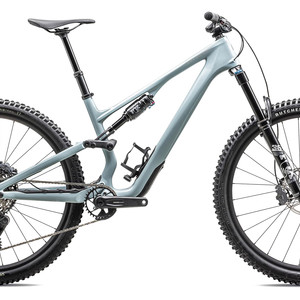

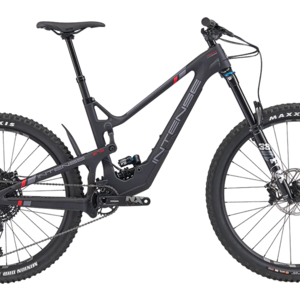

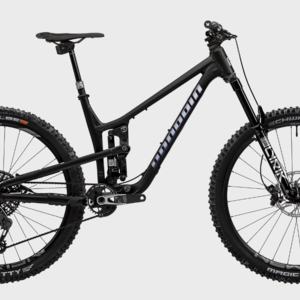
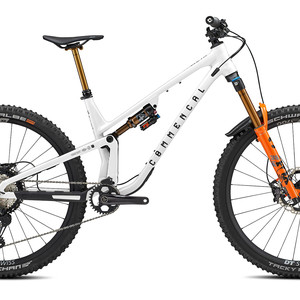
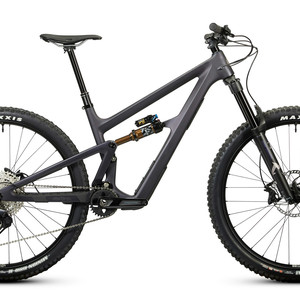






21 comments
Post a reply to: Tested - 2022 Specialized Stumpjumper EVO Alloy Elite